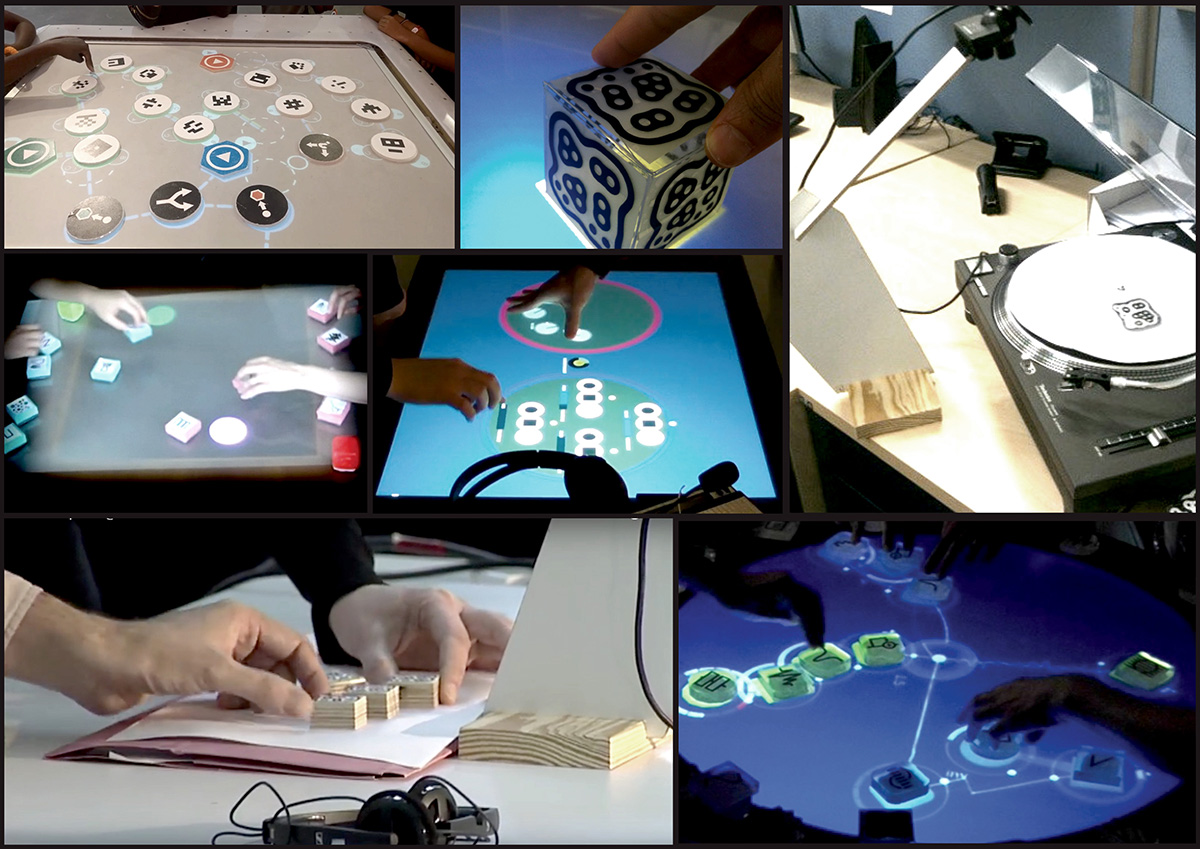TUIs and Tabletops

Tangible user interfaces and tabletops have been around for more than a decade. There was a big hype in the early 2000s with multitouch interfaces as seen in movies like Minority Report and famous musical tabletops like the Reactable.
I did my PhD at the Open University in the UK on how to evaluate and design interactive tabletops for music performance. I conducted two studies with the Reactable, one study in a science museum, and the other study with expert musicians improvising in groups. I also built my own prototype for composing music based on everyday sounds and using a spatialization ambisonics with four speakers.
Here at Georgia Tech we are leading a second generation of tabletops. We are working on an NSF-funded project between Digital Media and the Georgia Tech Center for Music Technology that integrates the TuneTable tabletop as part of a wider ecosystem of Internet of Things. We are looking at how can tabletops be integrated in a wider ecosystem with tablets (TunePad) and laptops (EarSketch) within different interconnected settings, such as the museum, the school and home.
Note: This text and image were presented as a lightning talk at the First Annual Women and Music Tech Concert and Reception, held at The Garage, Atlanta, GA, USA, on November 2, 2016.